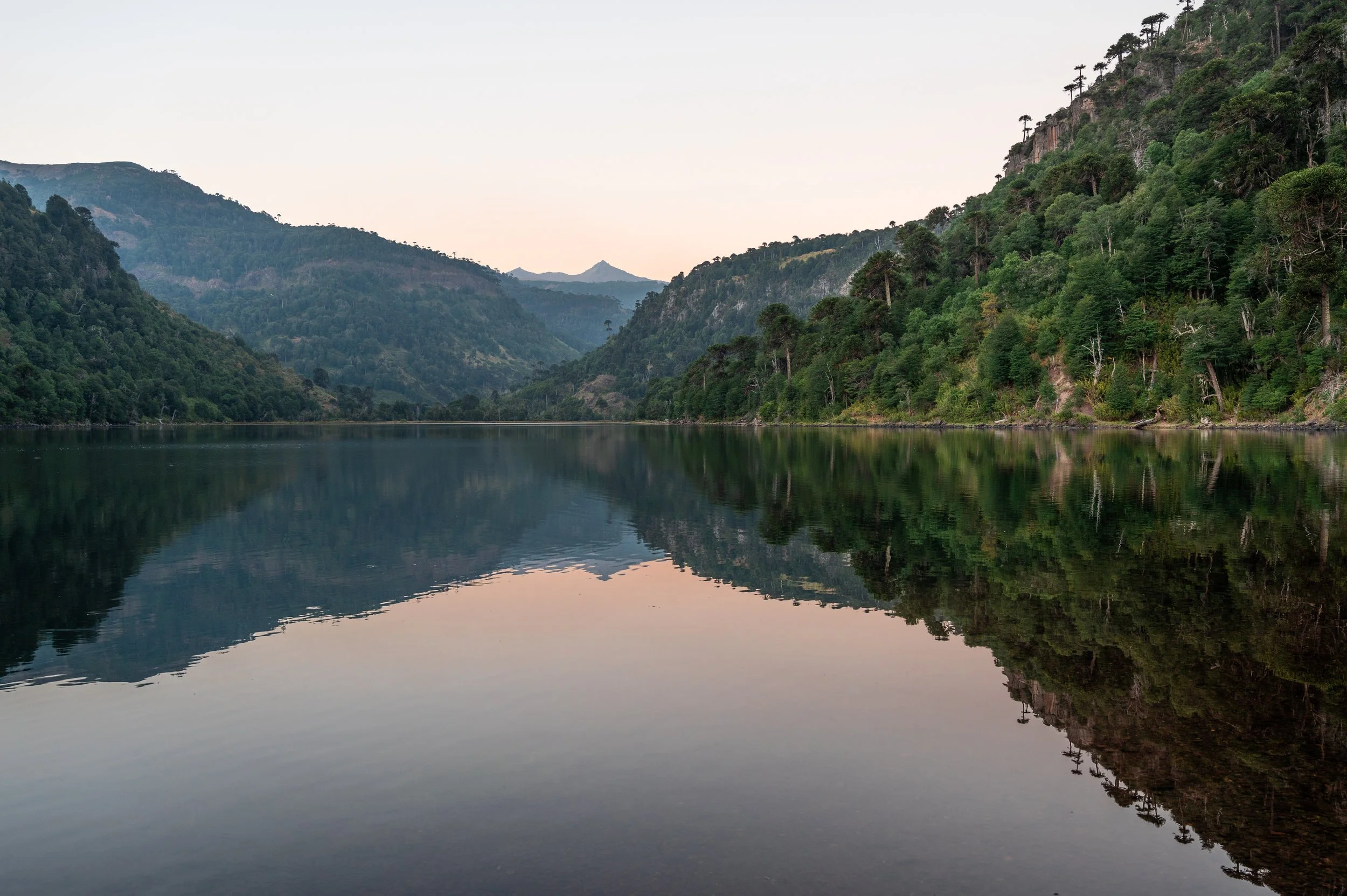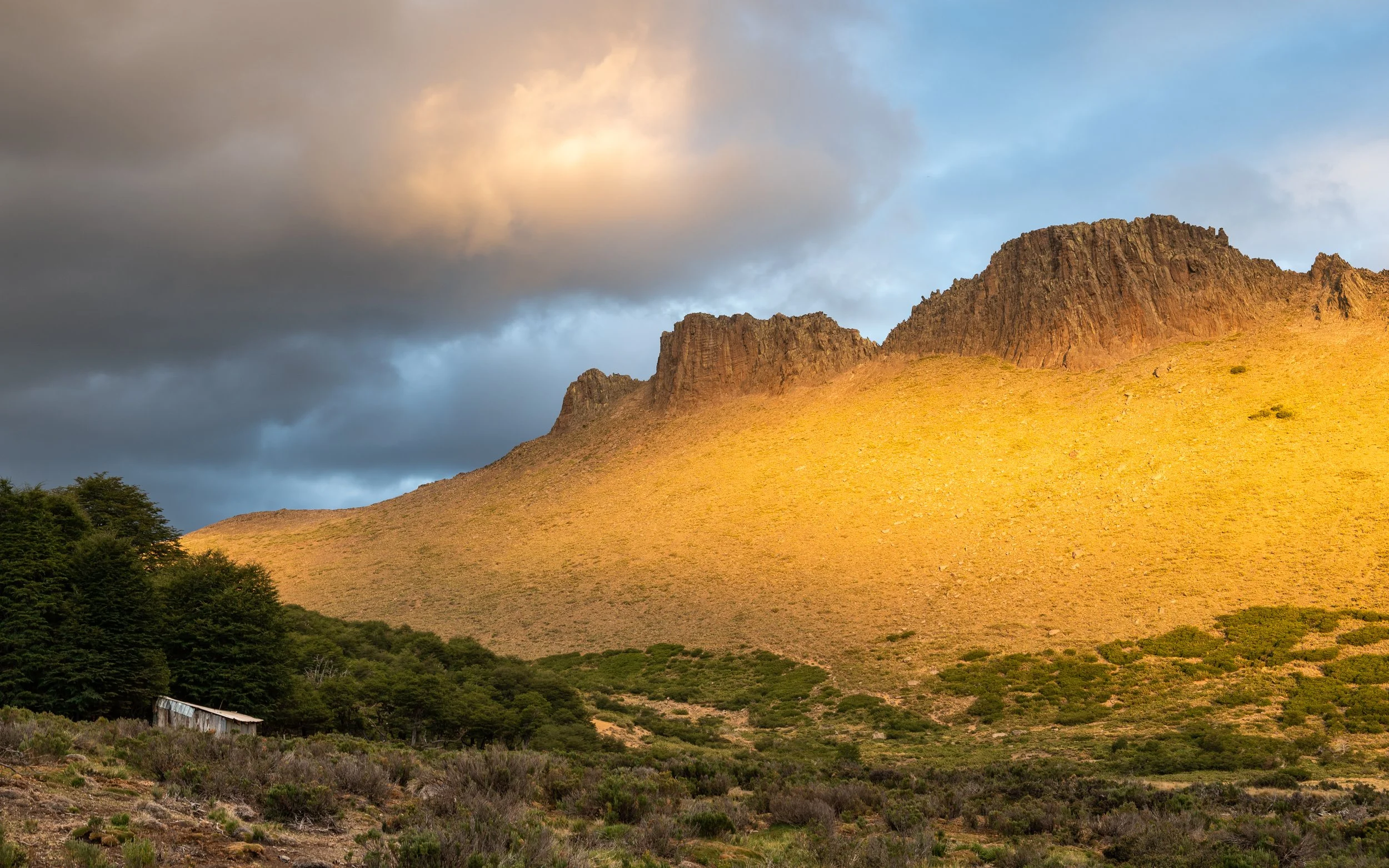THE CHRONICLES OF ARAUCANIA
Araucaria, or pehuén, is a coniferous species that dates back over 240 million years to the time of the dinosaurs. It is the most distinctive flora of the Araucanía region.
Imagine walking through a forest that feels straight out of a Jurassic Park scene: volcanoes and mystical peaks rising above prehistoric trees, with the distant echoes of dinosaurs roaring across mysterious lakes. You haven’t travelled through time—you’ve simply entered the Araucanía region of Chile.
-
This is the region we’ve been traversing for the past 10 days, moving across volcanic rock, sand, dust, passes, forests, and pathless plains. While there aren’t any real dinosaurs roaming about (unless you count the chickens), the sound of a cow giving birth on the far side of a lake can easily be mistaken for the call of a Brontosaurus.
What is true, however, is that the Araucanía region is characterized by its iconic araucaria or pehuén trees. These conifers, dating back over 240 million years, are among the most distinctive flora of the region. Their seeds, known as piñones, are rich in carbohydrates and have been a staple food for native Pehuenche communities. These seeds were likely consumed by various species of herbivorous dinosaurs when mammals were still relatively insignificant.
Craving a change from our usual pasta and canned tuna, we decided to gather and cook some piñones ourselves. Each araucaria tree typically produces several handball-sized cones, which contain layers of seeds protected by a tough coating. After boiling the seeds for over 20 minutes, they are easily squeezed from their shells. Cooked piñones have a taste and texture most similar to chestnuts.
Views over Laguna Liay, a prehistoric-looking lake where fallen and sunken araucaria trunks resemble dinosaur backbones. In the background is Volcán Callaqui.
Araucaria trees, volcanoes, mountains, and sandy ground were our everyday scenery.
Laguna Marinanqui, where the 'dinosaurs' roar from the other side.
Almost at the top of a 500-meter vertical, pathless ascent, zigzagging through araucaria trees and Chilean bamboo.
Señor Segundo kindly invited us to enjoy his wife’s famous tortillas after eagerly taking a photo with my father.
Approaching Laguna Verde, our latest campsite. One of the first real clouds of our journey brought us our first rain as well.
At Laguna Verde, we pitched our tent under the trees to shield against the fierce winds of an approaching storm, right next to a welcoming local family. They herd sheep and goats around the fertile pastures and call this place home from November to March.
Just a memorial photograph, but it’s time to bid farewell to my little Frankenstein monsters. After gluing, taping, sewing, and stamping them together repeatedly, my La Sportiva Ultra Raptor shoes are ready to be retired after just 600 kilometers. Now, I’m waiting for the tougher TX4 model, which has already been tested in the Balkans, to arrive. Until then, white socks and sandals will have to do.
After nearly 600 kilometers and over 22,000 meters of ascent, we’ve taken our final steps in the first, northern stage of our journey through Patagonia. Today, we’re celebrating with beer and wine for my father’s 62nd birthday and toasting Voranc, my cousin, who was born on February 17th—a piece of news that has brought me immense joy. Due to the approaching southern winter and several monotonous road sections, the second, central stage will be shortened. Nevertheless, we still have some iconic volcanoes to climb before we enter the final leg of our journey, where we’ll delve deep into the true heart of Patagonia.









